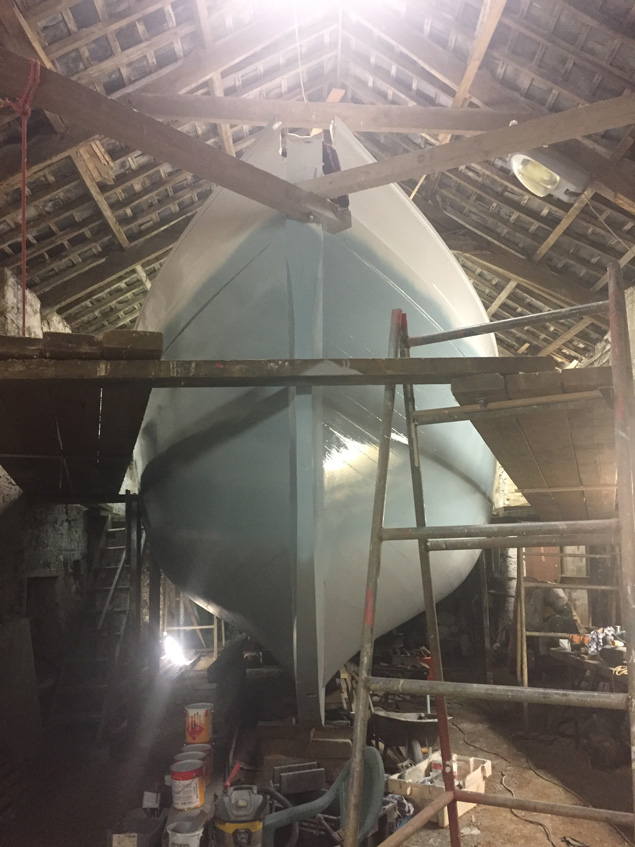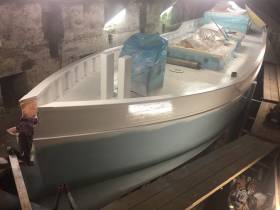Displaying items by tag: Oldcourt Boayard
Historic Boat Ilen Gets Her Colour Back, & It’s Mystifying…
The mood in the Corn Store at Oldcourt Boayard near Baltimore where the Conor O’Brien ketch Ilen is being restored may still be distinctly ghost-like writes W M Nixon. The old place would make a good setting for some tales of the otherworld even with clear air. But with the mist of busy spray-painting tingeing the scene, Ilen is emerging from her bare-wood state in a spectral climate where all things are possible.
And all things include the revelation of the final colour scheme chosen by Gary MacMahon of the Ilen Boatbuilding School. We’re told the 1927-built 57-footer will have blue-grey topsides, while the covering board and capping rail will be very soft grey, and the bulwarks will be white.
It has to be admitted it looks rather attractive. Subtle certainly. Yet I’m sure a majority in the Ilen/Afloat.ie poll voted for darkish green. I know I did, with the stipulation that she be given a classic white boot-top.
 Ghost ship will sail again. Officially, Ilen is blue-grey hull, covering board and capping rail very soft grey, with bulwarks white. Photo: Gary MacMahon
Ghost ship will sail again. Officially, Ilen is blue-grey hull, covering board and capping rail very soft grey, with bulwarks white. Photo: Gary MacMahon
In conversation with the great voyager/mountaineer Paddy Barry last night, originally on another topic, it seemed he too had voted for the dark green. So much so, in fact, that it led to a discussion of the origins of the colour English Racing Green in international motor racing. The answer is: think Counties Wicklow and Kildare, and Gordon Bennett. But that’s by the way. Meanwhile, the news on Ilen is she’s a class of blue-grey. We’d better get used to it.





























































